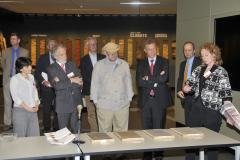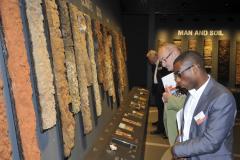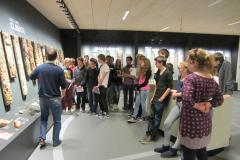Plea for soil restoration during opening World Soil Museum
Bare, degraded areas can be made green and productive again within 15 years, if local people apply restoration methods effectively. Ecological film-maker John D. Liu demonstrated this convincingly during the well-attended opening of the World Soil Museum on the 7th of April 2014.
Bare, degraded areas can be made green and productive again within 15 years, if local people apply restoration methods effectively. Ecological film-maker John D. Liu demonstrated this convincingly during the well-attended opening of the World Soil Museum on the 7th of April.
More than a hundred people visited the opening ceremony, which started with five inspiring talks about soils in the world. Liu wowed the audience with beautiful images of China’s Loess Plateau, an area the size of Belgium. The once fertile grounds there had been washed away, leaving a blighted land scarred with deep ravines and farmers scarcely able to make a living. But in recent years these hillsides have become cloaked with forest and productive fields once again. This is due to large-scale terracing, rainwater collection, tree planting and many other restoration measures, started only fifteen years earlier in 1995.
‘What’s more important?’ Liu asked the visitors, ‘Acquiring material goods such as computers and cars, or a pleasant life in which we can enjoy the complexity of nature?’ Showing images from Ethiopia, he demonstrated how a dry and degraded area can have enough water for irrigation even just five years after the start of an ecosystem restoration program. Crucial for the success of such programs, he found out during his trips, is the involvement of local people. ‘There are plenty of people who have nothing to do. We must start these programs as soon as possible.’
The other guest speakers also praised the beauty of nature, and of the different soils in the world upon which nature and local people are dependent. The World Soil Museum plays an important role in the growing awareness of this diversity, they stressed. ‘The museum is more than welcome on the Wageningen Campus’, said Martin Kropff, rector of Wageningen UR, who closed the meeting. After the talks, the guests were shown round the museum in groups.


